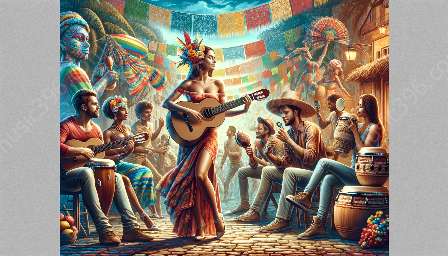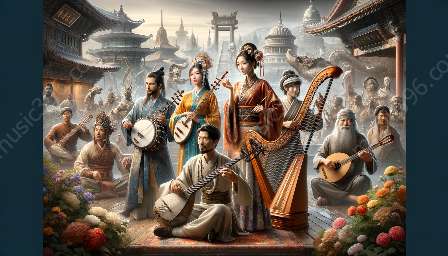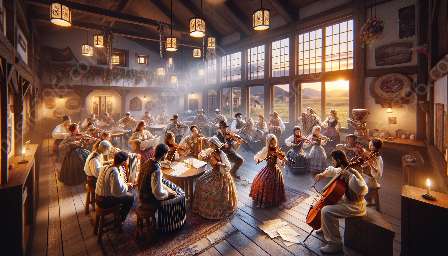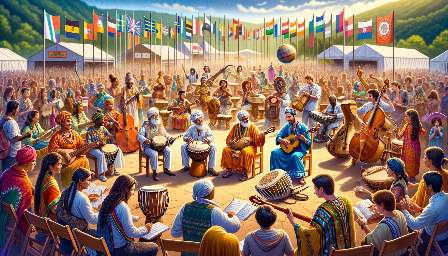Samba music, with its roots in African and European influences, has evolved over time, intricately intertwining with world music. From its humble beginnings to its global influence, samba remains a vibrant and captivating genre that embodies cultural diversity and heritage.
The Origins of Samba Music
Samba originated in Brazil, specifically in the Afro-Brazilian communities of Rio de Janeiro. It traces its roots to the late 19th and early 20th centuries, emerging as a powerful expression of the African diaspora and its fusion with indigenous Brazilian music and European influences.
The African Connection
African rhythms, brought to Brazil by enslaved people, form the foundation of samba music. This rhythmic complexity and infectious energy are key elements that have characterized samba music throughout its evolution.
Influence of European Music
European melodic and harmonic elements, introduced through colonization, added depth and diversity to samba music. This fusion of African and European musical traditions gave rise to a unique sound that continues to captivate audiences worldwide.
Development of Samba Styles
Over time, samba music has diversified into various styles, each carrying its own cultural and regional significance. From the traditional samba de roda to the modern samba-reggae, these stylistic variations reflect the dynamic evolution of samba music.
Global Influence of Samba
The vibrant rhythms and infectious beats of samba have transcended geographical boundaries, captivating audiences across the globe. Samba's influence can be seen in various world music genres, contributing to the global tapestry of musical diversity and innovation.
Cultural Significance
Samba music holds profound cultural significance, serving as a reflection of Brazil's rich heritage and diverse cultural influences. Its celebratory nature and rhythmic vitality have made it an integral part of Brazilian cultural identity.
Continued Evolution
As samba continues to evolve, it embraces contemporary influences while preserving its traditional essence. Artists and musicians continue to push the boundaries of samba, infusing it with new perspectives and fusing it with other musical genres.
Conclusion
The evolution of samba music reflects the dynamic interplay of cultural, historical, and musical influences. Its journey from its African and European roots to its global impact showcases the resilience and adaptability of this vibrant genre within the world music landscape.










































